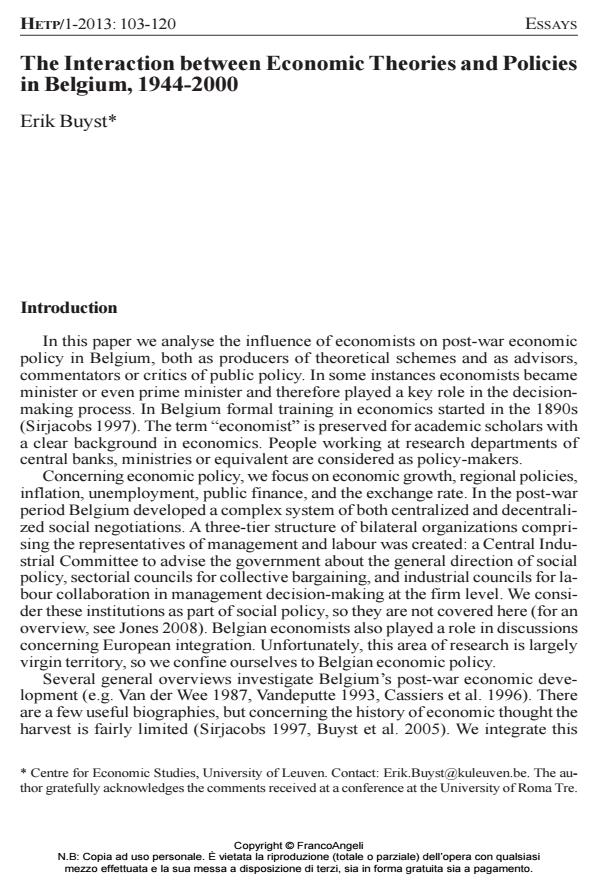The Interaction between Economic Theories and Policies in Belgium, 1944-2000
Journal title HISTORY OF ECONOMIC THOUGHT AND POLICY
Author/s Erik Buyst
Publishing Year 2013 Issue 2013/1
Language English Pages 18 P. 103-120 File size 166 KB
DOI 10.3280/SPE2013-001006
DOI is like a bar code for intellectual property: to have more infomation
click here
Below, you can see the article first page
If you want to buy this article in PDF format, you can do it, following the instructions to buy download credits

FrancoAngeli is member of Publishers International Linking Association, Inc (PILA), a not-for-profit association which run the CrossRef service enabling links to and from online scholarly content.
We analyse the impact of economists on post-war economic policy in Belgium. The severe budgetary and monetary crisis of the mid-1920s which brought the country on the brink of hyperinflation and a state moratorium, framed economic policy for several decades to come. Until the mid-1950s inflation fighting and a stable currency became an obsession in both economic thought and policy. In this climate the penetration of Keynesianism and of regional development policies was seriously delayed. Therefore the period between the mid-1950s and early 1960s was an important watershed. From then Keynesianism in its various forms blossomed. New paradigms, such as the monetarist counter-revolution and supply-side economics, failed to make a breakthrough in academia and had little or no impact on economic policy. Reckless economic policies in the aftermath of the two oil crises temporarily broke down the long run consensus concerning a stable currency.
Keywords: Economic thought, Belgian economics, Keynesianism, economic policy, economic history
Jel codes: B22, E60, N14
- The Causes of Growth during Belgium’s Industrial Revolution Erik Buyst, in The Journal of Interdisciplinary History /2018 pp.71
DOI: 10.1162/jinh_a_01232
Erik Buyst, The Interaction between Economic Theories and Policies in Belgium, 1944-2000 in "HISTORY OF ECONOMIC THOUGHT AND POLICY" 1/2013, pp 103-120, DOI: 10.3280/SPE2013-001006